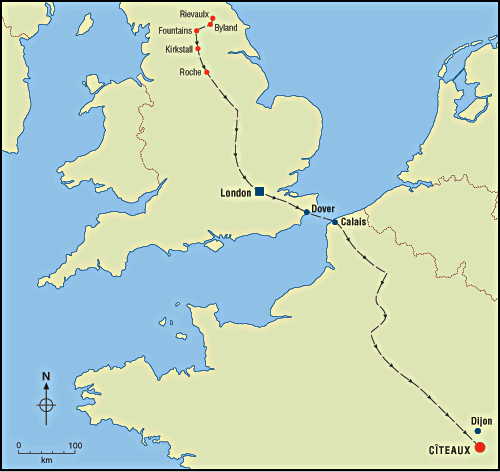 |
 |
 |
 |
 |
 |
 |
|
External affairs relating to the abbey and the Order (5/7) From the late thirteenth century the abbots of Kirkstall were increasingly caught up in business relating to the abbey and its estates. They were engaged in several lengthy disputes over their lands,(29) including suits against those accused of causing damage to their property and thieving.(30) The abbey was involved in a series of quarrels with St Leonard’s hospital, York, which arose, in part, from the proximity of their lands at Bramhope, but also from St Leonard’s demand for twenty sheaves of corn for every plough in the diocese of York, a privilege that they claimed dated to the tenth-century, and one that provoked considerable hostility.(31)
By the late thirteenth century the abbey was more greatly involved in commerce. In 1292 Kirkstall bargained to sell all its wool for ten years to the trading society of the Betti of Lucca. It was agreed that for the first three years the monks would charge eleven marks per sack for wool straight from the sheep, but thereafter the sacks would be sorted into good, middling and inferior and priced accordingly at 15 marks, 9 & 1/2 marks, and 8 marks; this suggests that there was high quality wool at Kirkstall.(32) The Italian merchants paid an advance sum of 160 marks, a practice that was often denounced by the General Chapter but rarely heeded. Difficulties later arose when the Betti were unable to meet their payments.(33) Duties pertaining to the Order could be time-consuming as well as financially draining, and included the abbot’s attendance at the annual General Chapter, the payment of taxes,(34) and arbitration in disputes amongst fellow Cistercians. In 1407 the abbot of Kirkstall was at the forefront of Cistercian affairs in the country when he, and the abbot of Thane, presided over a general chapter of the abbots of England and Wales at Combe Abbey. |
|||
